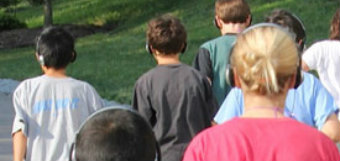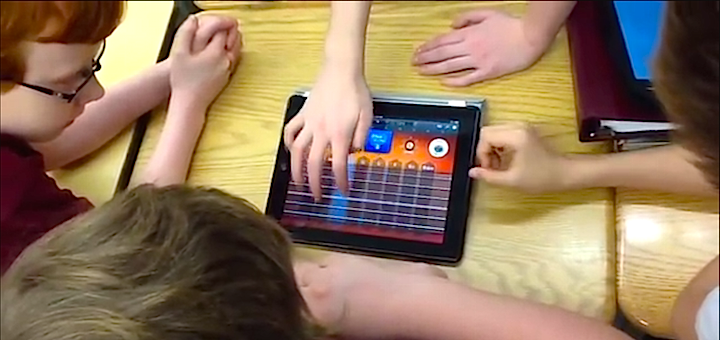Keys to Fostering Joy in Your Classroom
By Kasey Short

Emphasizing joy also contributes to a positive and fulfilling teaching experience for educators.
There are so many elements of a school day for teachers to think about, and joy is not one that I considered for many years of my career.
However, I have come to realize that many of my best lessons, routines, and accidental successes have been linked to joy for my students and/or myself – and that the more I consider joy when planning lessons and responding to students, the more we all enjoy our time together and the more students learn.
Not everyone gets joy from the same things, and there are days when it is a lot harder to spark joy for myself. We are not always laughing, and my students wouldn’t say they have fun in my class all the time. There is a lot of work, but I try to create an overall joyful feeling as a classroom community.
Celebrations
Taking a moment to celebrate accomplishments, milestones, and even silly holidays can lighten the mood and create a sense of community. I model this by sharing things in my own life that I want to celebrate and making ordinary things seem exciting.

Music is a mood lifter
I must admit: I don’t love music in my classroom. I can’t explain why, but mostly it doesn’t bring me joy; however, it can instantly lift the mood of my students, and that lifts my mood. A minute of upbeat music to start the class or during transitions often is just what is needed to help wake everyone up and refocus.
Having students submit songs that bring them joy and keeping them on a playlist is one way to collect songs, and if a student seems to be having a bad day, playing their song may lift their mood and help them feel seen.
We need more “fun” texts
Much of what students read in school is sad. The assigned books, history texts, current events, and even many of their independent reading books are often centered around conflict and trauma. Most of these texts are necessary and important for students to read, but it is also important to include and recommend texts that are joyful and funny to read.
Since Covid, more and more students are asking for funny, “not depressing” books when they look for independent reading options. The world is complicated, and having a break from that in a book is something I also enjoy. (See some examples here and here.)
Nature (go outside)
When possible, I take my students outside of class. Fresh air and a change of scenery can make all the difference for me, and the students love an opportunity to get outside. I am fortunate to have a courtyard with tables outside, and if the weather is cooperating it is my favorite location for group work.
Movement (stretch and jump)

If students need to talk through ideas or brainstorm, taking them to walk a lap or two around the track can spark some joy through nature and movement while also giving them time to brainstorm ideas.
Reflection
A moment of reflection and quiet can be just the mindfulness minute that me and my students need to reset and refocus. It’ss difficult to foster joy when we’re all in a hurry to get things done or worried about what is next.
I find very little joy in those situations when I’m in a rush-rush mindset. I have to intentionally set aside moments for reflection and pause within my classroom to benefit myself and my students. Taking time to set intentions, journal, or take a few mindful breathes can help foster a calmer environment and lift the mood.
Positive Feedback
Focus on students’ strengths and achievements and share with them what they are doing well academically and as members of the classroom community. I also enjoy getting feedback from students. The positive words are affirming, and their suggestions help me to be better and bring them satisfaction.
Relationships
Working toward strong relationships with students and between students helps to create a community where we spend more joyful time together. The time I take to check in with students and ask about their interests, weekends, families, etc. helps show them that I care about them and builds a relationship. I also share a bit about myself and my family with them.
I create opportunities for students to collaborate and get to know each other as they work together. Working together, sharing about oneself, and learning about others can create joy in the moment and foster an overall joyful environment for the students and teacher.
Laughter

Being willing to laugh at myself and be silly goes a long way with students. Sharing funny stories or memes can lighten the mood. In my classes, even nerdy English jokes get a laugh from them because they think it is ridiculous.
Most of the funny moments in class are not planned, but when there is laughter, I give it time and embrace the moment. Instead of hurrying to the next thing, I let the joy build, and those funny moments are some of my favorite teaching memories.
Kasey Short (@shortisweet3) is the Middle School Director of Studies and an 8th Grade English Teacher and Advisor at Charlotte (NC) Country Day School. Kasey loves to share ideas from her classroom and her leadership roles and writes frequently for MiddleWeb. She attended the University of North Carolina at Chapel Hill where she earned a bachelor of arts in middle school education with a concentration in English and history. She went on to earn a master’s in curriculum and instruction from Winthrop University.
































I love how you blend personal experiences with practical strategies, making them relatable and actionable for fellow educators!